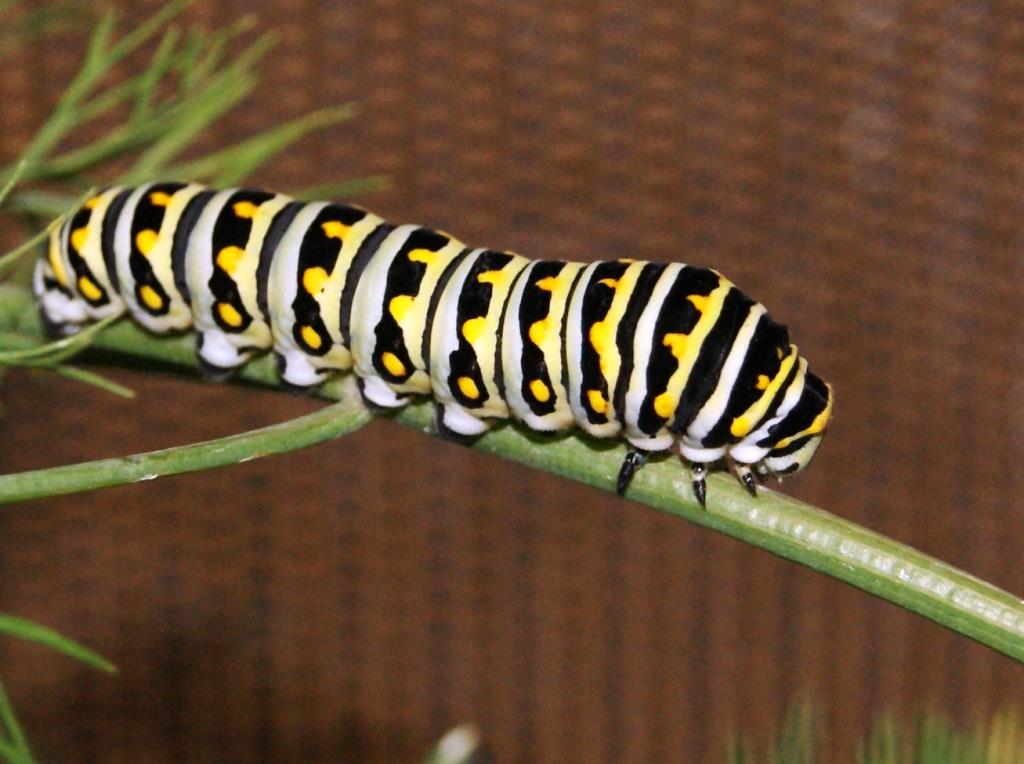
by Matthew Orwat | Oct 21, 2013

Second instar, Black Swallowtail larva. Image Credit Matthew orwat
Busily devouring dill and fennel, the lime green, black striped caterpillars in the UF IFAS Extension Washington County Office have quickly become a popular attraction. It is fortunate that the South’s climate is warm enough to allow for three generations of this species every year.
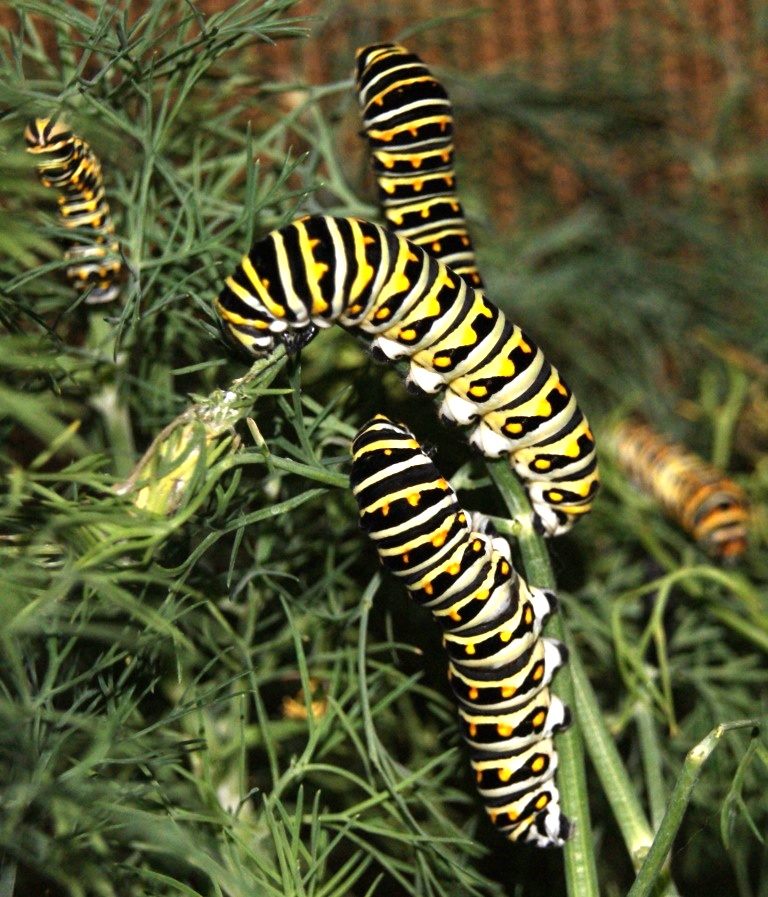
Larvae Busily Devouring Dill. Image Credit Matthew Orwat
Soon, the caterpillars of the Black Swallowtail (Papilio polyxenes asterius ) butterfly species will continue their pupae stage by forming a chrysalis and emerging as one of Florida’s most recognized swallowtail butterflies.
The chrysalis is formed by two glands located inside the caterpillar that secrete silk. The silk threads stick together and harden when exposed to fresh air. The hard, protective coating is usually camouflaged from predators and blends in with the environment. Inside the chrysalis, the process of metamorphosis continues as the adult structure forms while the juvenile structure breaks down. The insects are very inactive during this time as they grow and change. This stage can last from two weeks to an entire season in temperate climates and tropical dry seasons. When hormones indicate it’s ready, the butterfly emerges by splitting the chrysalis open either biting its way out or using spit to soften the ends.
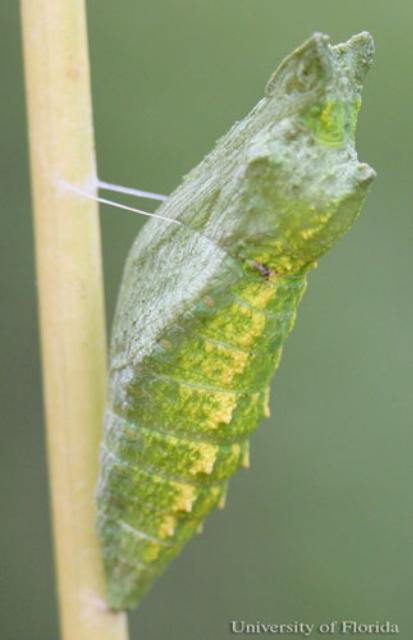
Green Chrysalis. Image Credit Don Hall UF IFAS
The Black swallowtail has quite a heavy appetite for such a small creature. They eat a variety of plants in the carrot family (Apiaceae) such as dill, fennel, parsley, celery, and carrot leaf. In addition to these cultivated species, they will feast on mock bishopweed, roughfruit scaleseed, spotted water hemlock, water cowbane, and wedgeleaf eryngo. They have also been known to enjoy Common Rue (Ruta graveolens L.).
They exhibit several interesting behaviors throughout their life cycle. For example, when they feel threatened the Black Swallowtail larvae will exhibit yellow antennae-like structures called osmeterium. These flare out and emit a foul odor, like rotten cheese, if one’s finger gets too close.
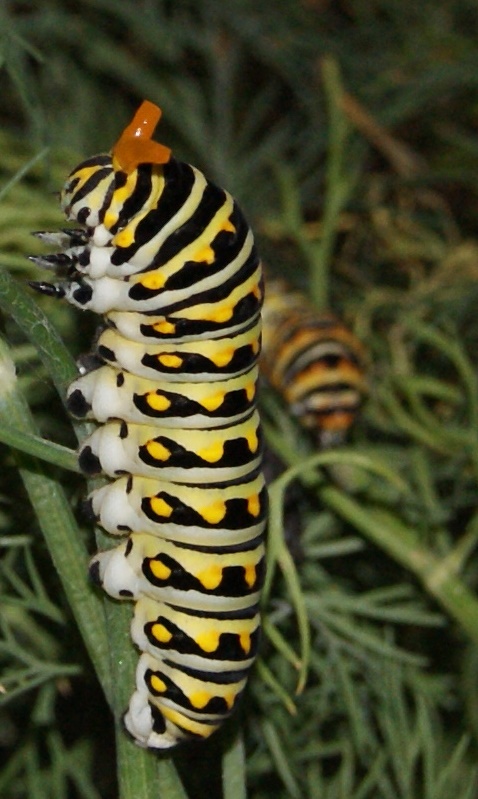
Osmeterium on display. Image Credit Matthew Orwat
Even though they are voracious plant eaters and honorable defenders of their territory, butterflies play a vital role in agriculture by pollinating crops and flowers. They’re an indicator of a healthy ecosystem; an abundance and diversity of butterfly species illustrate the overall health of an area. With their acute sensitivity to contaminants and toxins, butterfly populations will not be found in polluted areas. Recognized for their beauty, butterfly watching has also become a popular hobby and pastime.
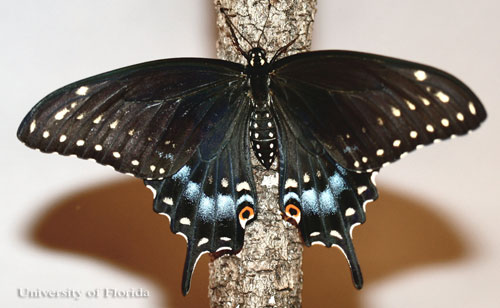
Photo courtesy of Donald Hall, University of Florida.
It’s never too early to think about planning a butterfly garden. For more information on creating a backyard butterfly habitat, download this 4-H fact sheet for kids and parents. For more information on this specific butterfly, visit the UF IFAS EDIS website for a publication on the Eastern Black Swallwtail.
Additional Content by:
Julie Pigott Dillard, Director, UF IFAS Extension Washington County
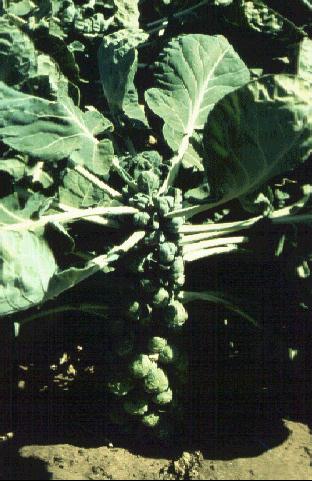
by Larry Williams | Oct 21, 2013
I tried growing Brussels sprouts for the first time a few years ago. I enjoy vegetable gardening and thought I’d try something a little different. To be honest, I wasn’t too happy with the results – nothing like starting an article on a positive note.
Actually, I don’t think I did too badly but overall I couldn’t decide if the results were worth the effort. Before I completely discourage you from trying this vegetable in your garden, I better give you some of the positives.
They are considered fairly easy to grow. They require about the same growing conditions and care as cabbage. Technically they are a type of cabbage. But instead of forming one large head, as cabbages do, they form many tiny heads along their tall stems. The round vegetable sprouts are about the size of walnuts. Each sprout resembles a miniature head of cabbage, with its layers of tightly packed leaves and central core.
Brussels sprouts are considered a cool season crop. They require cool weather for best growth. They should be grown in the winter garden in Florida. Now is a good time to plant this crop. If they are grown when temperatures are warm, the sprouts tend to be soft and open rather than solid and tightly packed.
Brussels sprouts can be started from seeds or small plants. But it may be hard to find plants for starting. Seeds can be planted directly in the garden or germinated in flats. If you start seeds in flats, plant about 25 seeds to a foot of bed and cover them with about half an inch of soil. When seedlings emerge, thin them to about an inch apart. They’re ready to plant in the garden when they’re about three or four weeks old. Plant them 30 inches apart in rows that are three feet wide.
Follow good gardening practices in watering, fertilizing and monitoring for pests.
Your sprouts are ready to harvest when they reach walnut size and feel firm. Usually, the first sprouts, near the bottom of each plant, are ready within three months. Don’t leave them on the plant too long or they’ll become yellow and tough.
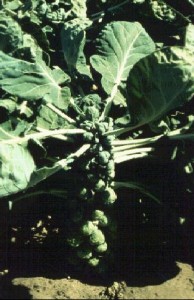
Brussels Sprout Plant
Photo Credit: UF/IFAS Extension
If you have space in your garden to devote to one crop for a minimum of three months (I left mine in the garden for five months), you might do okay with Brussels sprouts. Keep in mind they will still be producing in spring when it’s time to start planting your spring garden. The length of time it took to get a decent amount of Brussels sprouts was probably what I disliked the most about this crop.
by Julie McConnell | Oct 14, 2013
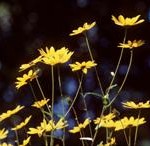
Swamp Sunflower Photo credit: UF/IFAS Milt Putnam
Fall Blooming Native Wildflowers
Drive along any highway or rural road at this time of year and chances are some color will catch your eye; not so much in the tree tops, but in ditches and right of ways.
Although yellow seems to be the predominant color in the fall, pay attention and you may spot reds, oranges, and even some blues in the wildflower pallet.
Examples of wildflowers that bloom late summer to early fall in the Panhandle:
• Bluestar (Amsonia ciliate), blue flowers, 1-3’
• Butterfly Weed (Asclepias tuberosa), orange flowers, 1-3’
• Lanceleaf Coreopsis (Coreopsis lanceolata), yellow flowers, 1-2’
• Leavenworth’s Coreopsis (Coreopsis leavenworthii), yellow flowers, 1-3’
• Swamp Sunflower (Helianthus angustifolia), yellow flowers, 2-6’
• Rayless Sunflower (Helianthus radula), purple flower, 2-3’
• Cardinal Flower (Lobelia cardinalis), red flowers 2-4’
• Lyreleaf Sage (Salvia lyrata), purple flowers, 1-2’
• Goldenrods (Solidago spp.), yellow flowers, 1.5-6’
• Tall Ironweed (Veronia angustifolia), purple flowers, 2-4’
To learn more about these and many other wildflowers read EDIS Publication “Common Native Wildflowers of North Florida.”
by Matthew Orwat | Oct 14, 2013
It is time for another question of the week. What is the name of this tree? is it a native? Answer will be posted below the pictures next week !
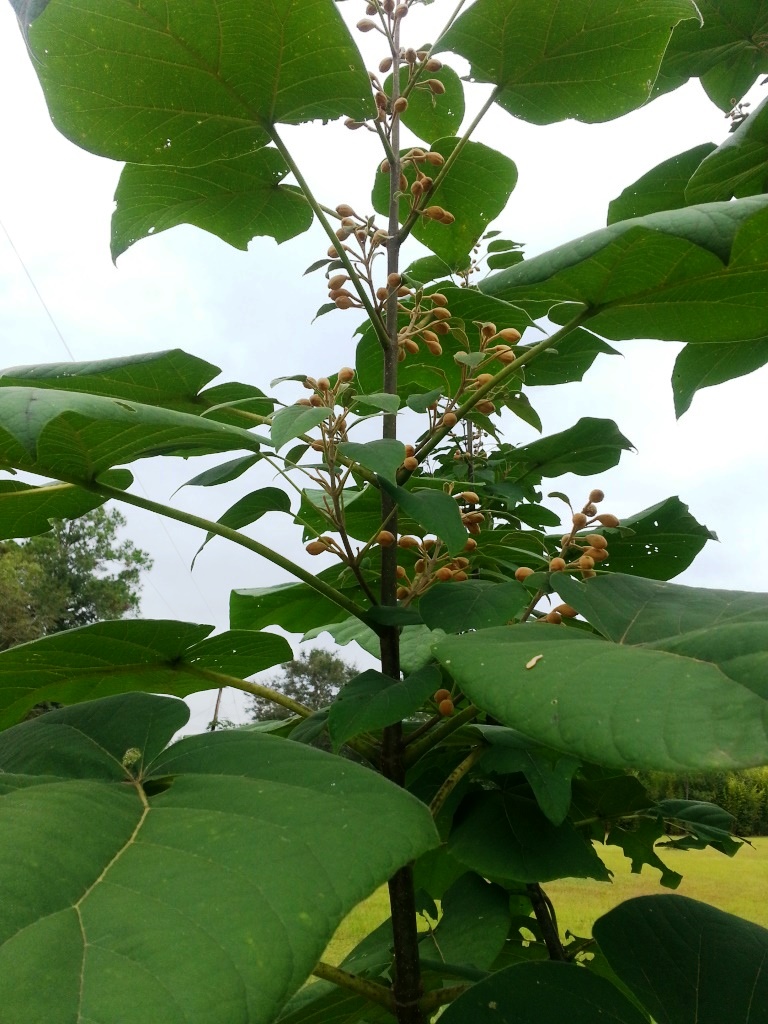
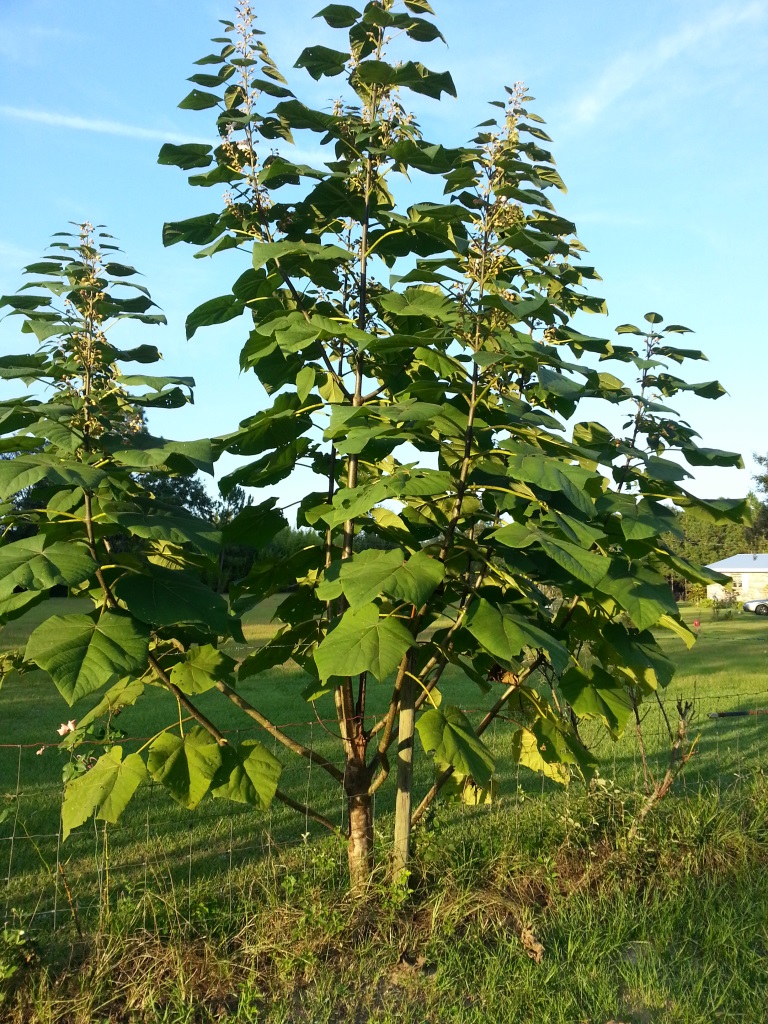
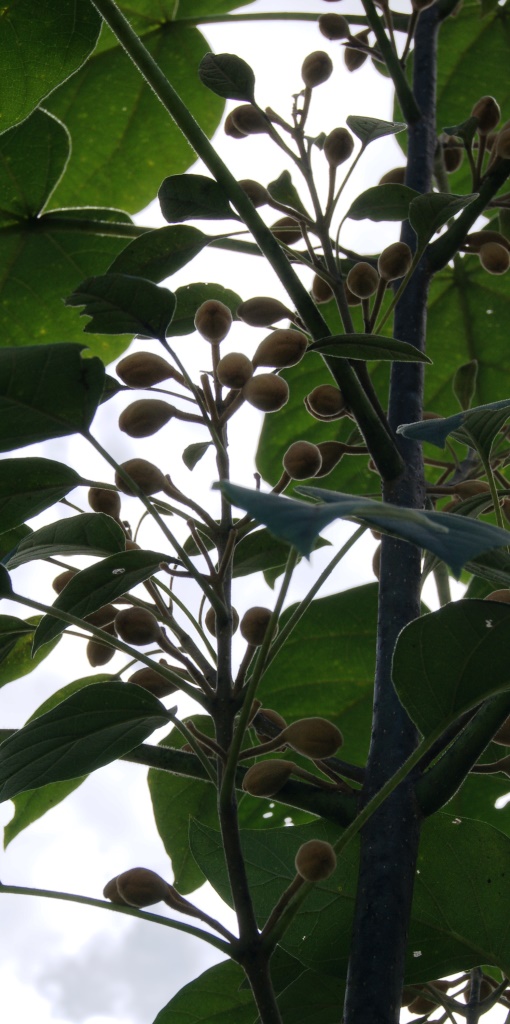
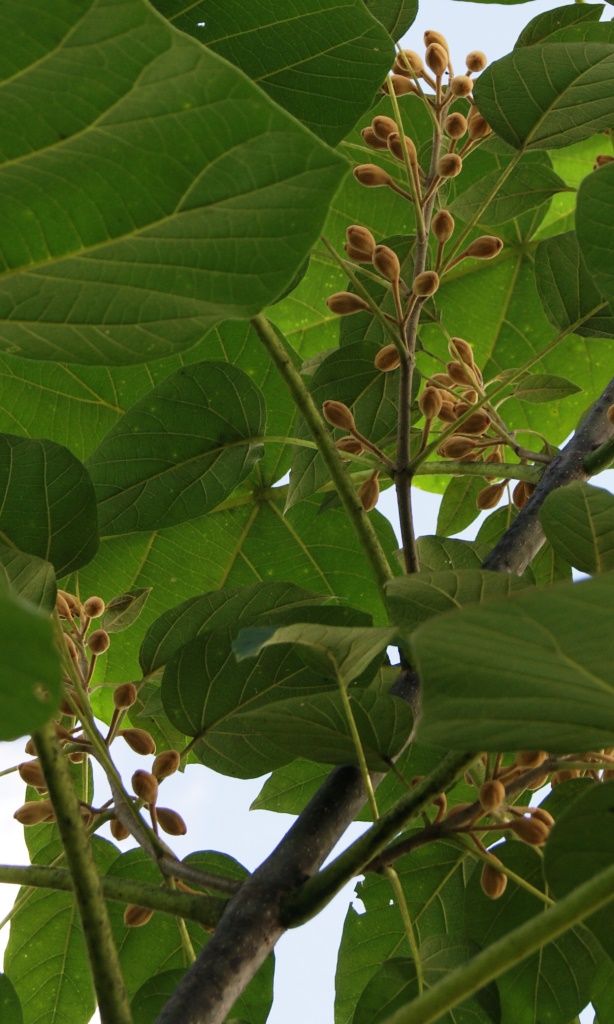

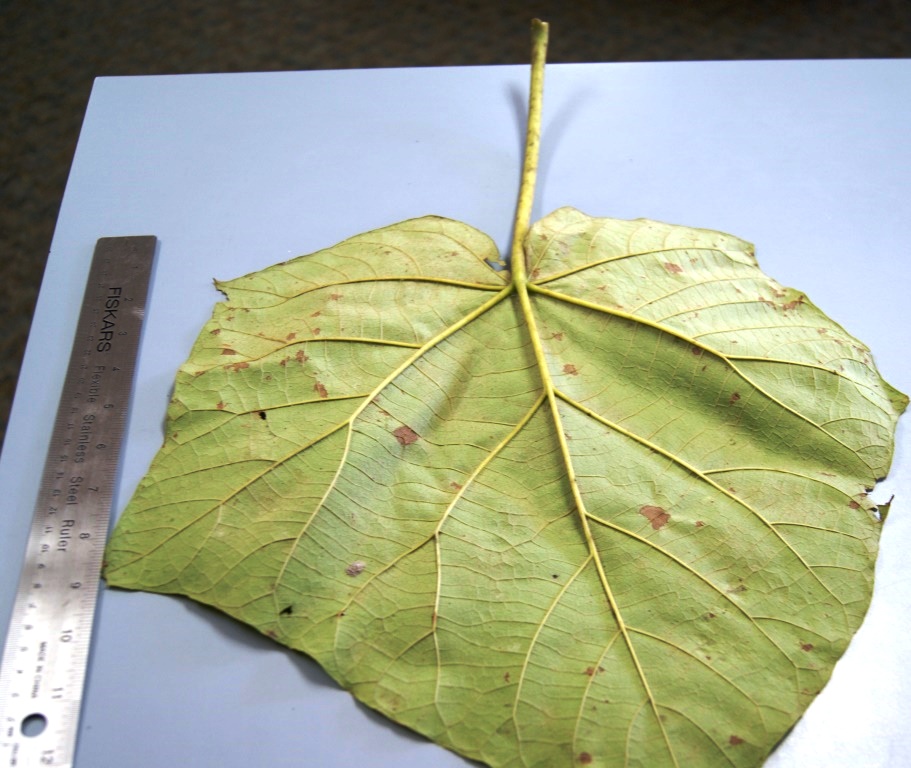
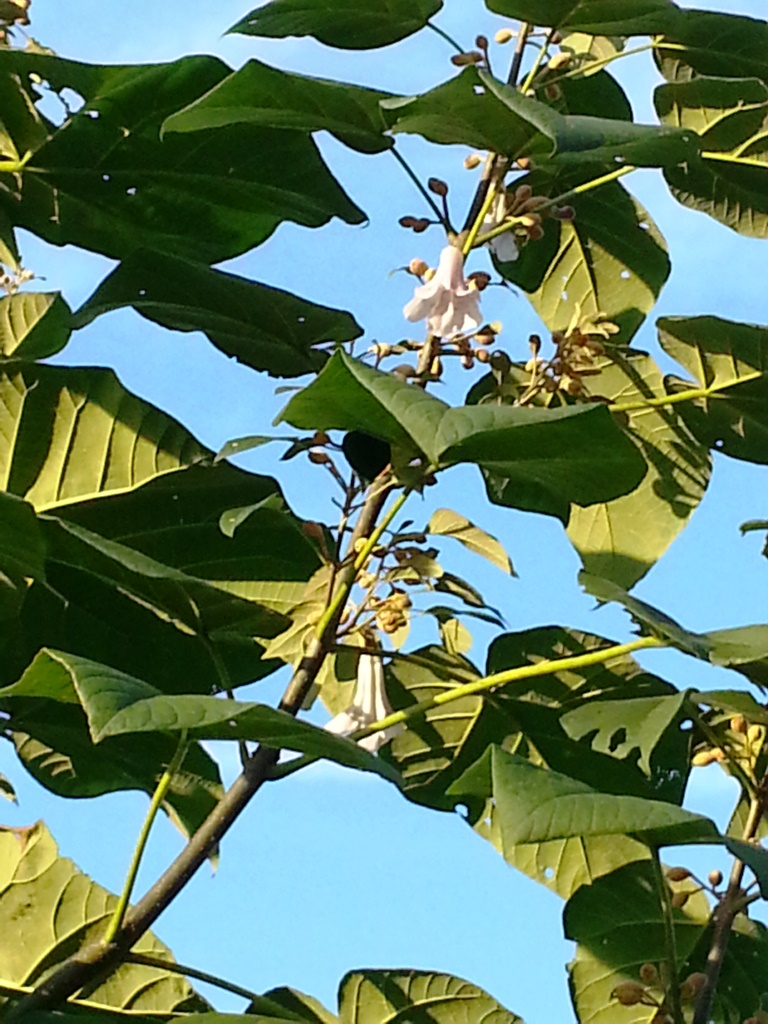
Answer: A species of Paulownia, “Princesstree”, Paulowniaceae (Princesstree Family)
by Beth Bolles | Oct 7, 2013
It is now too late for homeowners to apply nitrogen fertilzers to warm season lawns for the year.
Many fertilizers are available in the stores and promotions are everywhere that state that now is the time for lawns to be winterized. Applications of nitrogen after mid September can lead to turf problems next spring. Nitrogen encourages growth of the grass which uses up stored food. As the weather frequently changes throughout the winter months, grasses may use up their food reserves and not have enough carbohydrates to regrow when weather consistently warms next year.
Besides creating unnessary new growth as grasses enter winter dormancy, lawns receive additional stresses when gardeners add nitrogen this late in the season One such issue with a late season application of nitrogen is that it can make the grass more susceptible to large patch fungus. This fungus is active when soil temperatures range between 75 and 65 degrees F. Nitrogen applications encourage lush growth which can increase the incidence of the disease.
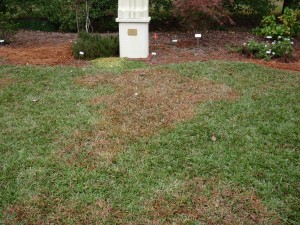
Large patch fungus can be more of a problem on turf following late season nitrogen applications.
For those that feel it necessary to apply some type of fertilizer now, potassium may be applied for the next couple of weeks. Potassium is often sold as a 0-0-60 and the rate is about 1.5 lbs. of the fertilizer per 1,000 square feet of lawn.
Learn much more about lawn fertilization from the University of Florida IFAS Extension.

















